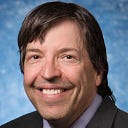Mileva Einstein’s Desperate Plea To Carl Jung: Help Me With My Son!
Mileva Maric Einstein, Albert Einstein’s wife, wrote in 1936 to famed Swiss psychoanalyst Carl Jung for advice about their younger son Eduard Einstein, diagnosed with schizophrenia.

Of the three children of Albert Einstein and Mileva Maric Einstein, only one, Hans Albert, the eldest son (and middle child), ended up with a happy life and a successful career. As a hydraulic engineer, he was honored for his achievements. The Einstein lineage (Albert and Mileva’s grandchildren, great-grandchildren, and great-great grandchildren) stems from his marriage to Frieda Knecht.

Lieserl, in contrast, Albert and Mileva’s first child and only daughter, who was conceived and born before they got married, did not have such a fulfilled life. Rather, it seems to have been cut short at an early age. While in the late stage of her pregnancy, Mileva left Albert in Switzerland and returned to her native Serbia to give birth. There, little Lieserl remained. It is unclear what happened after that. Scholars believe that she possibly was adopted and likely died very young. Given that Albert remained in Switzerland during her birth and early years, he probably never met her.
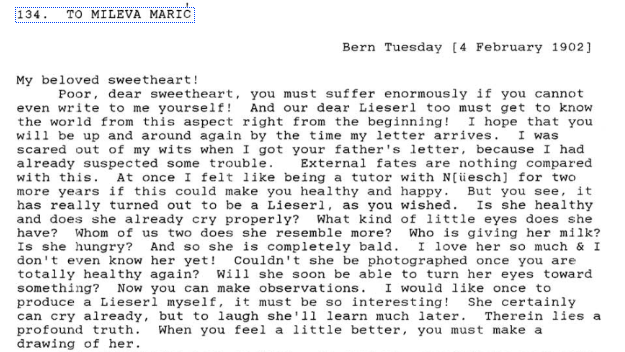
That leaves Eduard, the youngest child, born on July 28, 1910. Nicknamed “Tete” he was very bright and well-read, with interests in poetry and music. His childhood was disrupted by the separation and divorce of his parents, a process that began in 1914, when Albert accepted three concurrent positions in Berlin, including a professorship at the university. Mileva didn’t like Berlin, and soon moved back to Switzerland with the children.
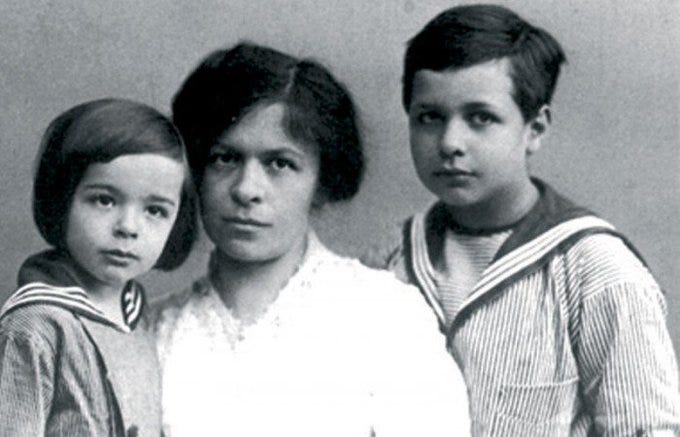
Mileva soon found out that Albert was having an affair with his cousin Elsa. After a halfhearted attempt (on Albert’s part) to reconcile, they were divorced. Albert soon remarried, living with Elsa and her two daughters, Margot and Ilse, in Berlin.
Einstein wrote often to his sons, and sometimes took them on vacations. In 1925, for example, he took them on holiday to Kiel, in northwestern Germany. Albert penned a poem about enjoying “yeast cakes” at a bakery there:
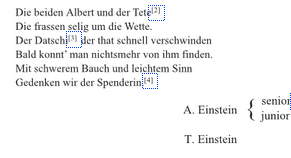

By the time he was in his late teens and early 20s, Eduard had aspirations to become a psychiatrist. Albert Einstein approved his career choice and wrote to him about the works of Freud. Mileva supported both children with some of the money from Albert’s Nobel Prize, as stipulated in the divorce settlement. By all accounts, however, she was very depressed. When Eduard began to display signs of mental illness, she had difficulty handling the situation emotionally. Eduard began to be seen at the Burghölzli, a famous psychiatric hospital in Zurich, where he received a diagnosis of schizophrenia and residential treatment.

Then, in 1933, after the Nazis took power in Germany, Albert was forced to cut ties with that oppressive regime, which had raided his property, and put a bounty on his head. He and Elsa moved to Princeton, where he began a position. By that time Hans Albert had relocated to Dortmund, Germany. Soon he also emigrated to the United States, leaving Mileva alone in Switzerland to cope with Eduard’s dire situation. Her depression worsened, along with her financial situation.

On April 21, 1936, Mileva wrote to renowned Swiss psychoanalyst Carl Jung, with a desperate plea for help with her son. Here is my loose translation:
Dear Prof.,
In the past semesters I have followed your statements in most of your lectures with great interest and admiration. Unfortunately, it was not only a Platonic interest in this science that led me to do so, but the deep need to try to understand a little the misfortune of a serious illness that has struck my son (who is also a son of Prof. A. Einstein, the famous physicist). I’ve wanted to see you to ask for advice and hear you express your opinion about his condition. Now, on top of my other troubles, I have become very impoverished and would hardly be able to offer you anything valuable in return for your effort, which has held me back. But if you’d be willing to chat, I would be very grateful.
There is no record of Jung responding to Mileva, only a note that he may have been on vacation at the time: https://blogs.ethz.ch/digital-collections/en/2019/02/15/das-tiefe. Nor is there any evidence that Jung ever met with Eduard.

After Mileva died in 1948, Eduard was essentially abandoned. He would spend the rest of his life at the Burghölzli. Interestingly, though impaired, he continued to engage in creative expression, such as sketches and poems. One such poem is particularly impressive: Einsames Ende (Lonely End) which expresses his feelings in a moving fashion.
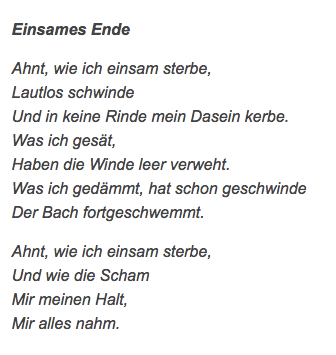
Here is my personal translation and interpretation of that poem:
LONELY END
Forebodings, how I’m dying lonely
Silently disappear
And in no bark
My existence notched.
What I’ve sown
The winds have blown away
What I’ve contained
Has already disappeared
The stream has washed away.
Forebodings, how I’m dying lonely
And how the shame,
My grip on myself,
Took everything from me.
Eduard Einstein died of a stroke on October 26, 1965 at the age of 55. It is troubling to think of how much his life would have been different if modern treatments were available, and he wasn’t institutionalized. It is a tragic tale indeed.
Reference:
Paul Halpern is a University of the Sciences physics professor and the author of sixteen popular science books, including Synchronicity: The Epic Quest to Understand the Quantum Nature of Cause and Effect.
